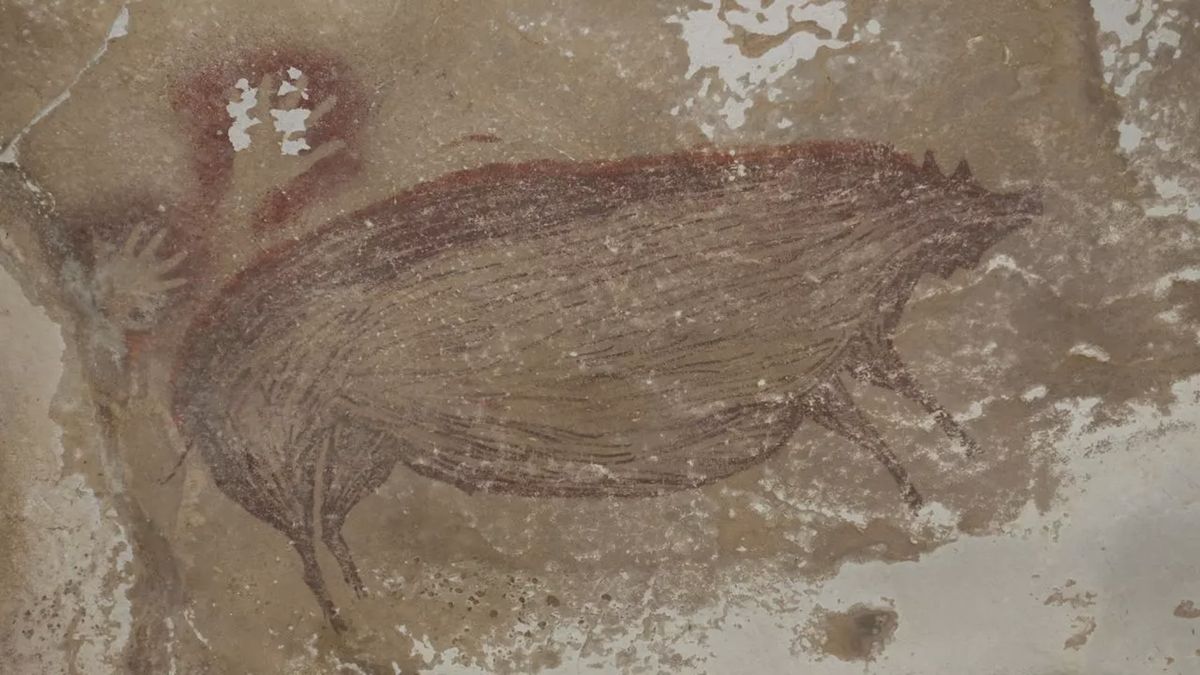TheThe discovery is described in the Wednesday edition of the magazine Science advancesIt also provides the oldest evidence of human presence in the area.
A co-author of the article, Maxime Ober, from Griffith University in Australia, told France Press that the painting was discovered on the island of Sulawesi in 2017 by doctoral student Sarran Burhan, in part of the archaeological excavations the team was doing with the Indonesian authorities.
Leang Tedongnge Cave is located in a secluded valley surrounded by limestone cliffs, about an hour’s walk from the nearest road. It is only accessible during the dry season, due to floods during the rainy season. Members of the reclusive Bugis community told the team that this was the first time Westerners had arrived.
This painting is 0.54 meters high and 1.36 meters wide, and this painting of Celebes Pig was painted with a dark red ocher dye. The pig depicts a short, erect mane of hair, as well as a pair of canine-like facial growth, typical of an adult male of this type. Two lines of hands appear over the back of the pig and appear to be facing another wild boar that has only been partially preserved. All this gives the impression that it is a narrative scene.
Another co-author, Adam Broome, said, “The pig appears to be observing a fight or social interaction between two other wild boars.”
Celebes pigs have been hunted by humans on the island of Sulawesi for tens of thousands of years, and the latter is often depicted in the prehistoric art of the region, especially Ice Age art.
Via Wallacia
Dating specialist Maxime Aubert identified the calcite deposits that formed on top of the mural, then used the uranium dating method to claim that the deposit was 45,500 years old. The researcher explained that the mural is at least old, “but it may be much older because the dating we use only dates the calcite above.” The people who made it were completely new, they were like us, and they had all the skills and tools to make any painting they wanted. ”
Before that, the same team discovered the oldest known rock painting also on Sulawesi Island. It depicted a group of half-human and half-animal figures hunting mammals, and it turns out to be no less than 43,900 years old.
Cave wall paintings like this one also help fill gaps in our knowledge of ancient human migrations. The inhabitants are known to have arrived in Australia nearly 65,000 years ago, and may have first crossed the eastern Indonesian archipelago and Asia, of which Sulawesi is a part.
The archaeological site now represents the oldest evidence of human presence in Wallacia, but researchers hope that additional fossils will show that peoples have been in the area for a long time, helping to solve the Australian settlement mystery. . The team also believes the painting was painted by Homo sapiensNot by a human species extinct today like the Denisovans, but it cannot be said with certainty.
To make the outlines of the hands, prehistoric artists had to place their hands on the surface of the rock before spitting dyes on it. The team hopes to be able to extract DNA samples from saliva.

“Subtly charming problem solver. Extreme tv enthusiast. Web scholar. Evil beer expert. Music nerd. Food junkie.”


